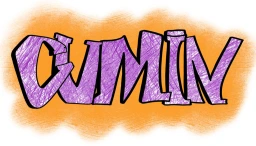Reimagining access and inclusion in schools, music hubs and beyond
Added to website 18/07/2023.
As they near the end of two years of funding for CUMIN (the Contemporary Urban Music for Inclusion Network), project leads Pete Dale (University of York) and Pamela Burnard (University of Cambridge) reflect on what has been achieved and what knowledges have arisen, been shared, and generated throughout the project. Their findings platform the work of a range of community music organisations and artists, and call for contemporary music making to be better understood.

‘It’s not what you know or whom you know, its what you do‘
Written by Pete Dale and Pamela Burnard
CUMIN (the Contemporary Urban Music for Inclusion Network) formally began in January 2022 thanks to funding from the Arts and Humanities Research Council (AHRC). Our key question has been, what new and different ways to widen participation and enliven engagement in music (in schools, beyond schools, for healing, etc.)? What can we learn from the spirited artists and organisations and their situated practices of non-mainstream popular musics, and what can they learn from each other and through interactions with researchers?
We ran three workshops in 2022 (in Cambridge, York and Leeds) and a conference in London, in June 2023. Our first workshop, focused on ‘Inclusivity and Measurement of Impact’ and featured practitioners who have achieved significant impact with their work as well as academics with suggestions as to how best to measure and evaluate that impact. The second workshop, introduced new and diverse practices of ‘Hip Hop, Healing and Wellness’. The third workshop, focussed on ‘DJ Skills in Schools and Beyond’ featuring DJing, DJ educators and school teachers who use DJ decks in mainstream music education. The purpose of the June 2023 CUMIN conference was to build upon the diverse knowledges culminating from three workshops. We also have a forthcoming Oxford University Press edited book soon to be launched which features chapters from many of our partners (not only academic researchers but also many music practitioners who work within community educational, health and prison settings).
So, what we have learned over all? What was bought into the spotlight? What don’t people understand? We found, perhaps unsurprisingly, that contemporary popular forms of music (hip hop, grime, house, dubstep, etc.) do seem to be used increasingly by organisations around the UK and beyond who want to respond more directly with the contemporary musical interests of young people. This might be in the form of learning to DJ with organisations like DJ School UK and Future DJs who work with schools but also independently where schools offer the opportunity to learn. It might be an extra-scholastic opportunity to learn music production techniques, such as Noise Solution and Ruff Sqwad Arts Foundation (both have spoken at CUMIN workshops). Participants range from the likes of rappers BREIS and Rawz, who go into schools to offer lyric-writing opportunities, through to Vocal Beats, who work in NHS hospitals offering beatboxing alongside more traditional music-making like singing to bring health benefits and improved well-being to cancer patients.
Another significant lesson we have learned from this work is that this widened offer is in some senses about incredibly popular musical genres such as hip hop and grime. Yet in a GCSE examination in the UK, for example, students are not likely to encounter some of the more distinctive musical items and enactments that arise within those genres. So, if a rap song is to be analysed by GCSE students, which does of course happen sometimes, a value system inherited from ‘classical music’ (and filtered through the values associated with ‘rock and pop’) is likely to be imposed. Widening the music-related offer to contemporary young people also entails thinking about modes of music-making, however: DJing, rapping, beatboxing, beatmaking and so forth.
We also found that many music teachers, community musicians and music-orientated youth workers feel that they do not know enough about this music and music-making to use/teach it well and, as a result, they lack confidence and/or willingness. Representatives of UK exam boards AQA, Edexcel and Trinity, speaking on a panel at the CUMIN Conference, expressed a degree of openness to contemporary popular music (even DJing) but argued that there is a limit to how different the GCSE, BTEC or A-level offers for music can look given certain government-imposed restrictions.
Can these problems be easily overcome? Some are looking hopefully toward the next general election, judged from some comments at our conference. CUMIN would argue, however, that we really need to work at this from the grassroots and without delay: if music is to be rejuvenated in schools and beyond, then we must make the change. Young people today think about and experience music differently from even just twenty years ago. Those of us who wish to work productively with contemporary young people need to learn about how music is made, played, produced, and understood today so that the offer of music in schools, beyond schools, for healing, etc. better matches the interests of young people.
About the Provider
Contemporary Urban Music for Inclusion Network
CUMIN is an inter-disciplinary cluster mixing researchers, practitioners and a range of stake-holders in educational and social projects of various kinds, fostering dialogue and production of new knowledge.


